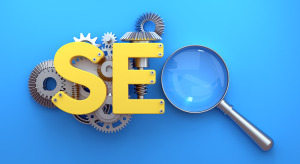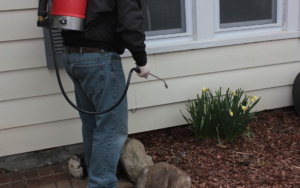Robotic Hernia Surgery, your surgeon makes only a few small cuts in the abdomen. Your doctor inserts a tiny scope with a camera and repairs your hernia using robotic arms and instruments.
Traditional open surgery requires a large incision and has a higher risk of complications. Robotic surgery offers a safer alternative with less recovery time and post-surgery pain.

Robotic hernia repair surgery is generally safe, but like all surgical procedures there are risks. These include reactions to the anesthesia, bleeding and infection in the wound or surrounding tissues. There is also the possibility that the hernia can come back (recur) or that damage to other organs or tissue can occur. It’s important to discuss the risks and benefits of robotic hernia surgery with your doctor and follow their instructions for preparing for and recovering from surgery to minimize these risks.
The primary advantage of hernia robotic surgery is that it is less invasive than conventional hernia repair surgeries. This results in shorter recovery times, reduced post-operative pain and a lower risk of hernia recurrence.
Traditional hernia surgery involves making a large incision in the abdomen to access and repair the hernia. This requires general anesthesia and has a longer recovery period than laparoscopic hernia repairs. The increased invasiveness of open surgery increases the likelihood of complications and hernia recurrence compared to laparoscopic procedures.
With hernia robotic surgery, surgeons make tiny incisions to insert the robotic instruments and operate from a console. This allows them to view the surgical site in 3D high-definition and manipulate the robotic arms with more precision than a surgeon’s hand. In fact, some surgeons describe operating the console as similar to playing a piano, meaning it feels intuitive and natural.
Enhanced 3D visualization makes it easier for surgeons to place hernia mesh, which provides additional support and reduces the chance of the hernia returning. In addition, surgeons are able to stitch more precisely using the robotic system. This helps reduce the risk of damage to nerves and other sensitive structures.
Despite the numerous advantages of hernia robotic surgery, it’s not the best choice for every patient. The decision to use the robotic procedure should be made on a case-by-case basis by an experienced hernia surgeon. In addition, clear regulatory guidelines and reimbursement policies are needed to ensure sustainable adoption and equitable access to robotic hernia surgery.
Flexibility
Unlike open surgery, which involves large incisions and long recovery times, robotic hernia repair is minimally invasive. This means less pain, shorter hospital stays and faster returns to everyday activities. Robotic hernia surgery is also safer and more precise than traditional methods. The instruments are smaller and more maneuverable, reducing tissue damage and complications.
During robotic-assisted hernia repair, your surgeon sits near the surgical site at a console and directs robotic arms that are affixed with special hernia-repair tools. Using master controls that function like forceps, the robotic arms respond instantly to the surgeon’s commands, delivering unparalleled precision and control.
After docking to the ports, the robotic arms hover above the patient in a stable position, and allow for increased intra-abdominal working space with reduced pneumoperitoneum pressure (about 8-12 mm Hg). The port clutch button allows your surgeon to shift the robotic arms towards the ceiling (to increase hernia-repair working space) or to the floor (to reduce hernia-repair workingspace), so that they can work through small incisions with greater flexibility.
A hernia is a protrusion of organ or fatty tissue through weakened muscle or fascia, most commonly in the abdominal wall. It can cause pain, a bulge or heaviness in the affected area.
Millions of people develop hernias each year and many require surgical repairs. Although hernias are common, it can be frightening to hear about undergoing surgery. It is important to understand what to expect during hernia repair surgery and how robotic hernia surgery might influence your recovery.
When compared to laparoscopic hernia repair, robotic surgery has been shown to offer improved outcomes including lower recurrence rates. This may be due to a more precise technique, better visualization and an enhanced ability to place mesh.
As with all surgical procedures, there are risks associated with robotic hernia repair. These include the possibility of complications from the use of general anesthesia, infection, blood loss and damage to surrounding tissues. Patients with hernias should weigh these risks against the benefits of hernia repair, which can be significant. Your hernia doctor can explain the procedure in more detail and help you decide what is best for your health and recovery.
Visualization
During robotic hernia surgery, surgeons use a console to control the robot’s arms with a 3D high-definition view of the surgical area. This provides enhanced visualization compared to laparoscopic minimally invasive surgery and enables surgeons to maneuver instruments with greater dexterity. Additionally, the robotic arms are wristed, allowing them to move with greater flexibility than a human hand can. This translates to better precision for the hernia repair and less risk of complications during and after the procedure.
As an added benefit, robotic hernia surgery is significantly less invasive than traditional surgery and causes less muscle disruption. This allows patients to recover more quickly and return to their normal activities sooner. Additionally, it reduces post-operative pain and minimizes the need for long hospital stays.
In this minimally invasive hernia repair procedure, tiny incisions are made to insert the robotic instruments. The robotic arms are equipped with miniaturized tools and a high-definition camera to see the surgical site. During the hernia repair, the weakened muscles of the abdominal wall are strengthened with a special hernia mesh.
Once the hernia is repaired, the incisions are closed with stitches. The abdomen is then returned to its normal shape and function.
Robotic hernia surgery is also able to handle more complex repairs, such as those found in people who smoke or have obesity. In addition, it can be used for hernias in multiple areas of the body, including the groin and umbilical hernia.
The results of robotic hernia surgery are impressive and speak for themselves. There are fewer complications, faster recovery times, and a significant decrease in hernia recurrence rates – all of which translate to quicker returns to normal life and a better quality of life for the patient. And that is something we can all be truly enthusiastic about.
Mesh Placement
In hernia repair, mesh is a synthetic or biological material that reinforces and strengthens the damaged tissue. Mesh prevents the weakened abdominal wall muscle from bulging into the hernia, and it provides long-term strength to prevent recurrence. In addition, the mesh provides a scaffold for new tissue growth and reduces pressure on the underlying organs.
Traditional open surgery requires a large incision that extends the size of the hernia, which increases the risk of infection and complications. Minimally invasive hernia repair uses smaller incisions, resulting in less pain and faster recovery. However, it can be difficult for hernia surgeons to place the mesh accurately through laparoscopic incisions.
Robotic hernia surgery offers a solution to these challenges by providing a more accurate placement of hernia mesh. The robotic platform enables hernia surgeons to view the surgical field from multiple angles, enhancing precision and control. This ability also minimizes the risk of contact with surrounding structures, such as the rectus abdominis muscle and neurovascular bundles.
To perform hernia repair using the robotic system, surgeons make small incisions around the hernia area. They then insert a small telescope attached to a camera, called a laparoscope, and miniaturized surgical instruments to repair the hernia and place the mesh reinforcement. The smaller incisions result in a lower infection rate, less post-operative pain and a quicker recovery.
The hernia mesh is placed in either a pre-peritoneal or retrorectus space. Mesh implantation in the pre-peritoneal space is known as transabdominal preperitoneal ventral hernia repair (TAPP), while mesh placed in the retrorectus is called robotic extraperitoneal hernia repair (eTEP). Mesh can be non-absorbable or absorbable, which differs in how fast it is absorbed into the body and the extent to which it retains its structural integrity.
Although TAPP and eTEP have been shown to be equivalent in long-term hernia recurrence rates, the benefits of robotic surgery versus laparoscopic repair for ventral hernias is still being studied. This is because long-term data are necessary to demonstrate whether the increased complexity of robotic techniques, such as reversal of linea alba, results in an increase in hernia recurrence.








